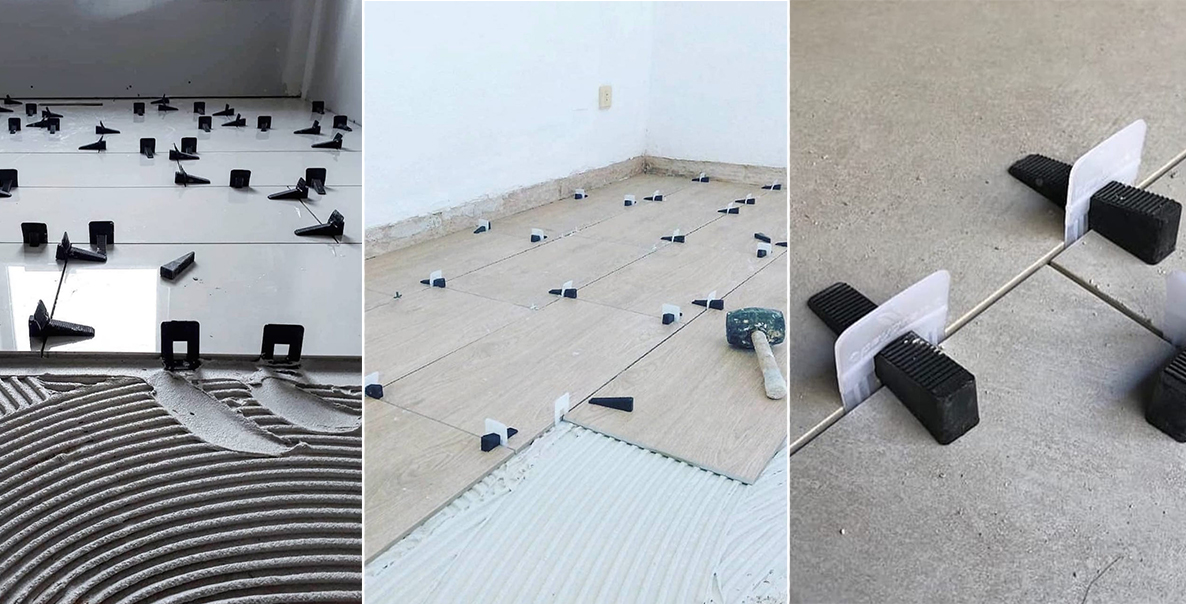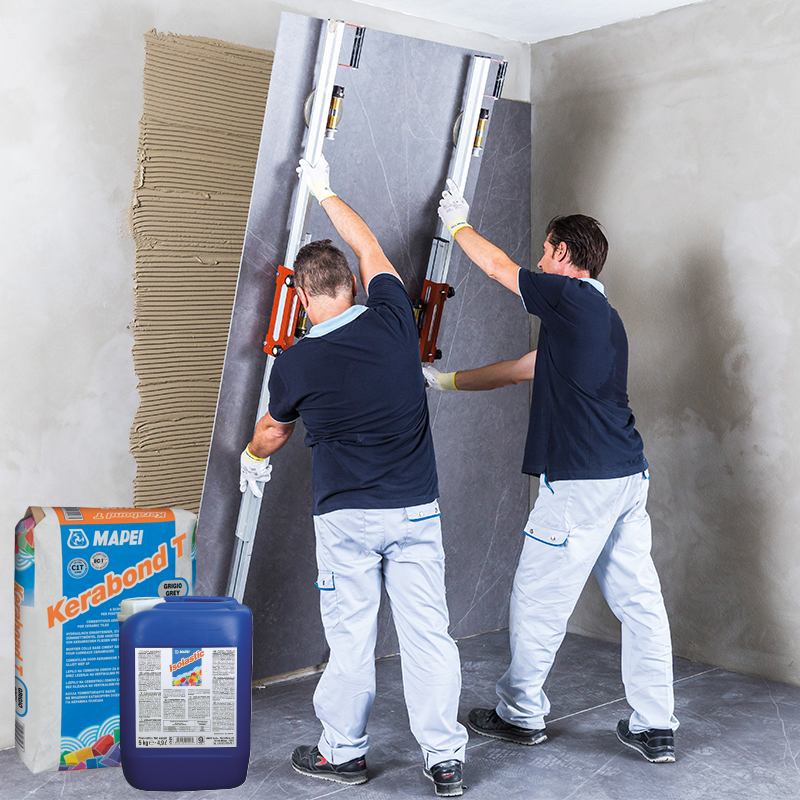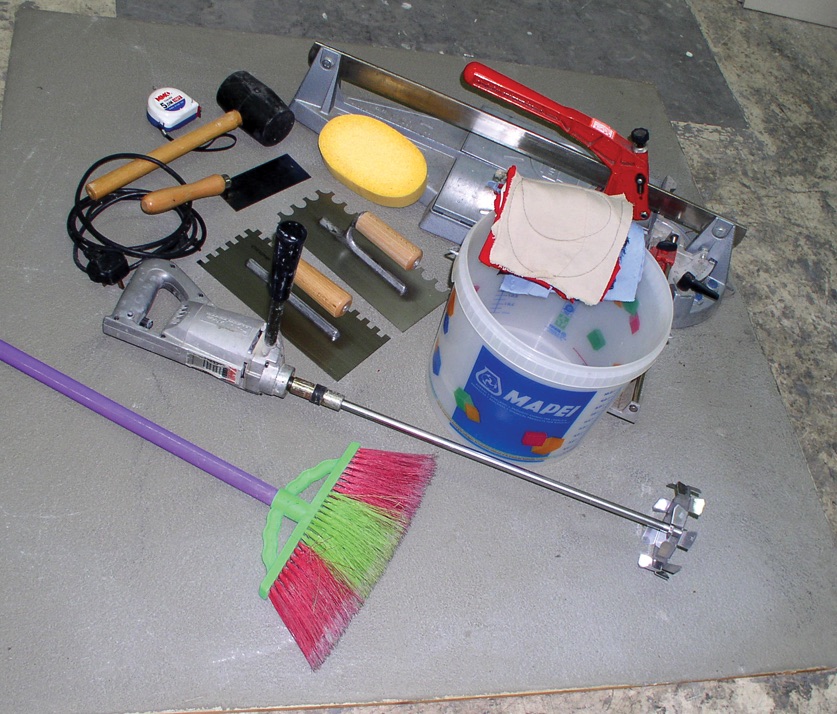
Well-installed tiles enhance the durability and beauty of tiled surfaces such as the floor and walls of this restaurant clad with Panaria Trilogy Sky Smoke, and bathroom with Panaria Trilogy Sandy Grey porcelain stoneware tiles.
You might buy the best quality tiles, but your investment might come up empty in the long run if the tiles are not properly installed. Empty air pockets in between the substrate [that is, the surface the tile will be placed on] and the base of the tile might compromise the durability of the material, and unevenness between tile pieces, known as lippage, can trap dirt and make the floor uncomfortable to walk on. Lippage can also happen when people unknowingly step on the completed tiled floor during the adhesive curing [or drying] period which may take weeks depending on the type of adhesive used. Grout joints that are too narrow can also lead to potential problems as the tiles have no space to expand and contract over time.

Photo credits: @tilelevelingsystems
Proper tile installation involves the use of tile wedges [pictured above] to lock the surfaces of all the tiles at the same level to avoid unevenness at the edges known as lippage. Also to avoid flaws, like someone stepping on it when adhesive may not be fully cured yet. This will eliminate common complains raised by clients, of tile warpage that might potentially happen during the process.
For design professionals, builders and their appointed tilers, keeping up with the latest methods of tile handling and installation will ensure the best possible outcomes for their clients. This is especially important also as large format tiles gain popularity and installers need to get acquainted with the proper methods of handling the tiles’ mammoth sizes [up to 3m x 1m currently and as thin at 6mm] as well as installing them securely.
As responsible tile providers, RICE is constantly in touch with our tile and adhesive partners to gain awareness of best practices in tile handling and installation, and we would like to share this important information with everyone. Just go to the Materials section on our website and click on Methods & Solutions to see a range of informative videos on the topic! Here, you will also find videos on tile maintenance and anti-bacterial qualities.

Photo Credits: MAPEI
Get tips for handling large format tiles like the ones in this picture and choosing the right adhesives for them, from the videos on RICE’s website.

Click here for a video on handling large format tiles.

Click here for a video on installing large format tiles.
As a general rule of thumb, we’ve outlined the general Dos of tile installation.
Before you start
- Make sure the laying surface is free from dirt, dust and contaminants, and flat.
- Please have all the appropriate and necessary tools ready for tile installation such as spirit level, notched trowel, rubber mallet, tile spacers, sponge for cleaning, measuring tape, bucket for the mixing of adhesive, cement tray, and brick-laying trowel.

Photo Credits: Mapei
Make sure you have the right adhesive
Choose the most suitable adhesive based on the following:
- type of substrate
- type and size of tile
- location of tiled surface [floor or wall; indoor or outdoors]
- weather conditions at the time of laying
- waiting time before the tiled surface can be used
Laying the tiles
Spread the adhesive on the tiles using a suitably toothed spatula. Press down well on the tiles to ensure wetting of at least 70% of the total surface. When laying tiles in commercial interiors or outdoors, it is vital to apply the adhesive using the double spreading technique to avoid empty spaces in between the tile and the substrate. The double spreading technique involves trowelling the adhesive at the back of the tile as well as on the substrate.
Recommended grouting
It is important to use a grout appropriate for the use of the tiled surface. Please follow the instructions provided by leading grout manufacturers.

Click here for a video on installing ceramic and porcelain stoneware tiles.

Click here to see a video on the errors that can occur during trowelling.
Find out more about tile handling, installation methods and adhesives at riceLAB by emailing us here, or call 6692 1199. RICE is temporarily closed due to the circuit breaker. Our team is still operational and contactable by phone and email during our temporary business hours of Monday to Friday, 9am to 6pm. Please continue to visit our website to make your material selections.
Get the European tiles you love at great prices! Browse the Tile Me You Love RICE range on our website in the Materials tab, using the filter tile me you love RICE.
Latest Post
Slither into the New Year with Harmony & Sophistication, along with PANTONE Colour 2025 - Mocha Mousse
Don’t miss these 3 RICE Tile Collections that best depict these Interior Designers’ Design Aesthetics
5 Local Renovation Projects that RICE Proudly Calls & Goes ‘Home’ to





